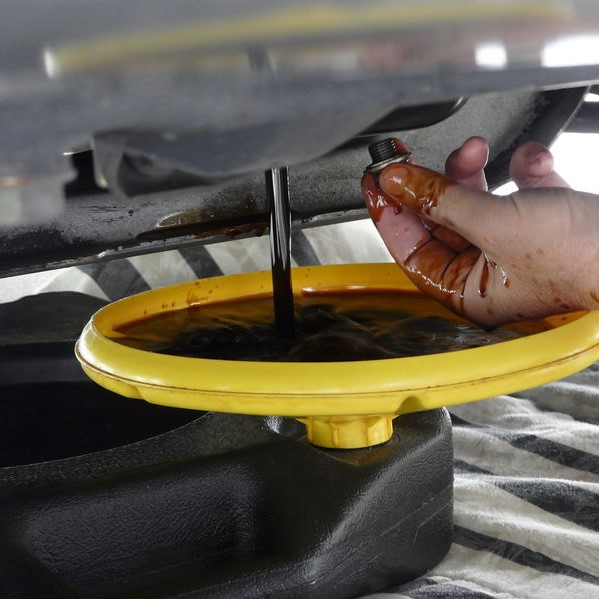
How often do you really need to change your oil?
Here in California, we have one the strictest emission laws in the country, maybe the strictest! Believe it or not, your vehicle’s oil change affects the emissions it puts out, but that’s not the only reason why oil change is important for your vehicle. That is the topic of this conversation. Read on to find out more!
Ask any “old timer” and he’ll tell you they don’t build cars like they used to, and he’d be right. In many ways though, they build them better and they make the products they use better like fuel, grease, and oil.
This is why the recommended time between oil changes is no longer every 3,000 miles. The engines today are built to use synthetic oil and other lubricants, and an oil change is now recommended every 5,000 miles and some makes and models, every 7,500 miles. Yes, your great granddad would be shocked today.
However, if you have an older car, the oil change interval is still based on the old mileage, dependent upon how you drive though. While the old cars haven’t changed, the oil and other products have.
If you drive in “normal” operation, the following is recommended in determining your oil change routine:
- You make short trips of five miles or less
- You live in an extremely cold, hot, or dusty climate
- You have repeated stop-and-go habits
- You haul heavy loads or pull a trailer
If you drive in a “severe service” mode, then you’ll want to stay in line with the owner’s manual that came with your vehicle.
How long can you go without getting an oil change?
As you read further, keep in mind that an oil change for bmw is not going to be the same as an oil change for a Chevrolet. We mentioned earlier in this article that the days of getting an oil change every 3,000 miles was gone by the wayside. Today, it is nothing for car manufacturers to recommend every 5,000, 75,00 even 10,000 miles between oil changes. Using synthetic oil only, there are a few vehicles that can even go fifteen thousand miles between oil changes.
Now, these are only general guidelines, and we can’t stress enough it can vary from make and model. Your owner’s manual is the best guide for your vehicle’s oil change routine. What if you bought the car used and it didn’t come with the owner’s manual? Here are a few warning signs you should be aware of that is telling you it is time to get that oil change:
- Oil color and consistency changes: Engine oil that is an amber-like clear, translucent color is new oil. As you drive your vehicle, it will collect debris, making the engine turn black and feel gritty. You can check this by removing the dipstick. If you can’t read the markings and number on the dipstick through what oil, is on the dipstick, it is time for an oil change.
- Burnt oil odor: When you notice burnt oil odor inside your vehicle, it has developed an oil leak. Take your car in for an oil change, mention the odor you’ve noticed. This will alert them to check for an oil leak other than the oil filter and oil pan.
- Knocking sounds from the engine: Oil prevent many of the moving parts in the engines from grinding when they work together but against each other. When the oil is low, or non-existent, those parts grind and create what is known as a knocking sound. As soon as you hear this knocking sound, get your vehicle to the mechanic or an oil & lube shop immediately. It not only needs a oil change, but it needs oil period!
- Warning light: When the dashboard has a oil warning light showing, it is time to get the oil checked and the oil changed.
What’s the difference in oil changes?
A regular routine of getting an oil change helps maintain your vehicle’s value while keeping it running in the best form possible. With car manufacturers changing the rules on the frequency, it can be confusing as to when you should take your vehicle in for an oil change.
Following the manufacturer’s recommendation in the owner’s manual is always the safest route to go.
What type of oil though?
- A conventional oil change is where the oil comes from petroleum, as it has for decades. Until the past few years, conventional oil change you’re your only option and today, there are still vehicles on the road where the conventional oil change is still recommended. Some cars, as we mentioned above, can go anywhere from 5,000 miles to 15,000 miles. This is because the car manufacturer used their brand of conventional oil, avoiding use of synthetic oil so the vehicle’s performance wasn’t decreased. This is the less expensive of oil change services.
- A synthetic oil change has advantages and benefits of its own and separate of the conventional oil change. The originally intended use for synthetic oil was for jet aircraft engines. After realizing the incredible reduction in friction, lessening the wear and tear on the engine, it was developed for use in vehicles. This non-conventional, high performance fluid creates a chemical formula that makes it unique in how resistance is increased against viscosity breakdown.
Whats included in an oil change?
Not all oil change service companies have the same routine of service. Some do nothing more than the basic oil change, while others go a beyond. Some car owners believe they do this for possible upsell, and while that is possible, many go above and beyond to keep their customers advised and safe. A full-service oil change at quality oil change centers will include:
- Change the motor oil with appropriate type of oil per the type of vehicle, local climate, and the customer’s driving style
- Inspect the air filter, cabin filter, and other filters
- A courtesy inspection of the following:
- Check and top off all fluids
- Check the brake and signal lights
- Lubricate the chassis if needed
- Inspect belts and hoses,
- Inspect the steering and suspension
- Check and replaced the windshield wipers
- Check the car battery
What is a basic oil change?
Typically, a basic oil change would be one many car owners do themselves. The oil is drained, a new filter installed, and new oil is added.

What is the difference between oil change vs oil flush?
An oil change is as we described earlier. The old oil is drained, a new filter is installed, and new oil is added. An oil flush, also referred to as an engine flush, loosens any deposits and dissolve any sludge. This get the engine to a like-new condition.
Caution of performing an engine flush on an older engine. Sometimes, it is that sludge that keeps the oil from leaking through any cracked or worn seals. Be prepared to rebuild, repair, or replace the engine if you do an engine flush on a vehicle with high mileage.
Okay, you do the recommended oil change for your vehicle, either 3,000, 5,000, or 15,000 miles. Can oil change cause transmission problems? Nope. While the transmission has nothing to do with an engine’s oil, much less an oil change, if the engine is having issues, you’ll notice it in how the transmission shifts. Call __PHONE__ today for your oil change needs in Inglewood, CA.
